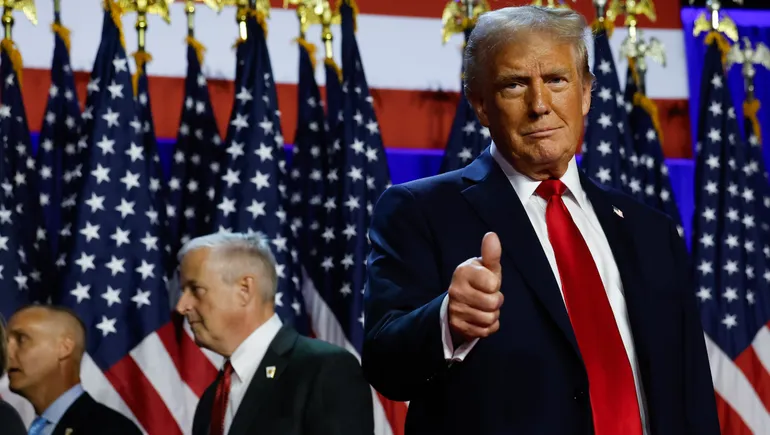Former President Donald Trump will become the next president of the United States. Following the Biden administration, which put billions of dollars into Amtrak, high-speed rail, public transportation and the transition to electric vehicles and buses, what might change under the incoming administration?
On transportation policy that affects cities and states nationwide, Trump has a mixed record. In his first term, he proposed a trillion-dollar infrastructure plan that never came to fruition. He repeatedly tried and failed to cut funding for Amtrak’s long-distance trains and attempted to take back nearly $3.5 billion in already-awarded federal grants for the California high-speed rail project to connect Los Angeles and San Francisco. Instead, the first Trump administration largely favored highway expansion projects.
Smart Cities Dive asked experts Wednesday morning for their thoughts on how the second Trump administration could affect forthcoming transportation policy impacting U.S. cities.
“The Trump administration in the past and the Republican Party’s general approach has been to advocate for significant cuts in public transportation,” said Yonah Freemark, research director of the Land Use Lab at Urban Institute. He added that pursuing those policies next year “could be absolutely devastating for urban transit systems.”
Federal grant programs under the Trump administration will likely focus on roads and rural areas, marking a big shift from the Biden administration’s prioritization of transit, cyclists and pedestrians, Freemark said.
However, rural Americans want more trains, not less, some rail advocates say. Staff from the Rail Passengers Association have traveled across the country over the last two years in an effort to bring back discontinued train routes, and “we’ve heard from rural communities that they feel disconnected and left behind,” said Sean Jeans-Gail, RPA vice president of government affairs and policy.
The previous Trump administration blocked funding for the Gateway project in New York and New Jersey to build a new two-track tunnel and rehabilitate the existing tunnels under the Hudson River that carry Amtrak intercity trains and New Jersey Transit commuter trains. The project began construction this year under the Biden administration.
“Investing in infrastructure has always had bipartisan support, and President-elect Trump has promised to strengthen America’s economy,” the Regional Plan Association said in an email statement. “Delaying these capital investments only drives up their costs and weakens our economy. We will be looking to our delegation and leadership in the House and Senate to continue these investments.”
Trump opposes New York’s plan to toll drivers entering Manhattan at or below 60th street, which would generate needed funds for subways, buses and commuter trains. He vowed May 24 on social media to “TERMINATE Congestion Pricing in my FIRST WEEK back in Office!!!” The plan has been on hold since New York Gov. Kathy Hochul ordered an indefinite pause to implementing congestion pricing on June 5.
In an email statement on Wednesday, Riders Alliance Policy and Communications Director Danny Pearlstein urged the governor to reverse her stance before Trump is inaugurated. “Governor Hochul must race against time to secure the money New Yorkers need to fix our aging subway and protect riders from climate change,” he said.
The Biden administration put forth a major effort to support the transition to electric vehicles, including a $5 billion program to create a network of EV charging stations every 50 miles along the interstate highway system or within one mile of an interstate exit, and federal incentives for electric vehicle buyers.
But “all EV policies are on the table” with the incoming administration, said Genevieve Cullen, president of the Electric Drive Transportation Association. “What will hopefully emerge from the fog of campaign rhetoric is when folks take a closer look at these EV policies, they’ll understand more clearly what the impact on investment and jobs in the United States are, and how consumers are benefiting and communities are benefiting,” she said.
More clarity on the incoming president’s policies will emerge in the coming months.

